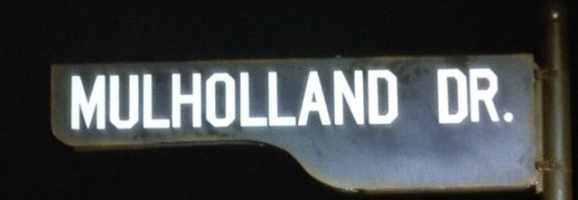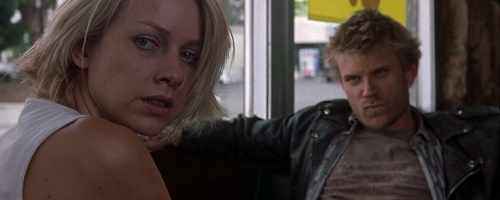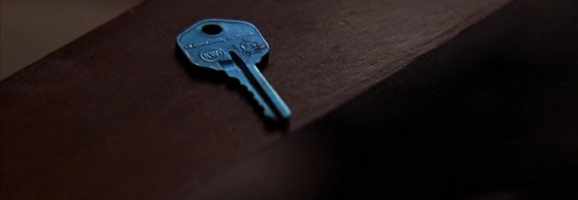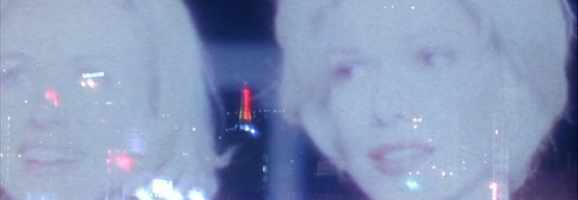The Fractured Gaze in Mulholland Drive

David Lynch’s Mulholland Drive remains, arguably, one of the most discussed American films of the last fifteen years. Released in 2001, the movie’s apparent labyrinthian plot, plethora of red herrings, and the fact that the two female leads portray at least two separate roles each, led to baffled– although largely complimentary– reviews and whole web sites devoted to interpretations of what the film is really about. Roger Ebert called Mulholland Drive “a surrealistic dreamscape in the form of a Hollywood film noir, and the less sense it makes, the more we can’t stop watching it,” while Andew Sarris found it “[o]ne of the very few movies in which the pieces not only add up to much more than the whole, but also supersede it with a series of (for the most part) fascinating fragments.” Responding negatively to the film, Peter Rainer suggests “Lynch needs to renew himself with an influx of the deep feeling he has for people, for outcasts, and lay off the cretins and hobgoblins and zombies for a while.”
While Lynch’s film is generally considered a thriller, there is much I find in the film that relates to the issues and tenets of the horror genre, especially in regard to how women are oppressed and rewarded according to the patriarchal hierarchy that permeates virtually every aspect of American society. Certainly, the three reviews referred to above allude to fragmented, nightmarish situations and characters often found in horror films. In Mulholland Drive, Lynch reflects upon these patriarchal tenets, offering the viewer a fascinating, sobering, and ultimately horrific look at the dark underbelly of the Hollywood dream myth.
In her hugely influential “Visual Pleasure and Narrative Cinema,” Laura Mulvey asserts that women in Hollywood films exist only to offer men visual pleasure. Indeed, she sees cinema as a microcosm of the larger patriarchal hierarchy that exists in society. “Woman,” she argues, “then stands in patriarchal culture as a signifier for the male other, bound by a symbolic order in which man can live out his fantasies and obsessions through linguistic command by imposing them on the silent image of woman still tied to her place as bearer, not maker, of meaning” (15). Mulvey articulates a cinematic relationship wherein “[t]he actual image of woman as (passive)” acts as “raw material for the (active) gaze of men” (25). Women, in short, are to be seen and not heard. Furthermore, they are not to return the male gaze.

Taking Mulvey as a starting point, Linda Williams details the dangers inherent in women returning the gaze of the monster (conventionally portrayed as a male figure). “When the Woman Looks” argues that while men and women both fear returning the gaze of the monster,
The male look expresses conventional fear at that which differs from itself. The female look– a look given preeminent position in the horror film– shares the male fear of the monster’s freakishness, but also recognizes the sense in which this freakishness is similar to her own difference. For she too has been constituted as an exhibitionist-object by the desiring look of the male. There is not that much difference between an object of desire and an object of horror as far as the male look is concerned. (20-21)
In Lynch’s film, Hollywood, as location and myth, constitutes the monster or the male gaze. Diane Selwyn constitutes the aspiring actress who gazes at the monster and sees fragmented pieces of herself. Subsequently, the Hollywood system, Diane’s refusal to adhere to its conventions of ladder-climbing, and her own submission to monstrosity combine to destroy her.
In acknowledging Mulvey’s assertion of the woman as something to be viewed with pleasure by man, it should come as no surprise that this patriarchal tenet extends to the casting of actresses in film. The power structure in Hollywood is overwhelmingly male, putting unestablished actresses at a severe disadvantage when attempting to secure roles which could further their careers. The “casting couch” is a term familiar to anyone who follows the films and stars of Hollywood cinema. As Borcherding and Filson note,
The famous “casting couch” and the alleged sexual exploitation of young men and women entering the movie industry are well-known to the lay public.
Biographies of those in the business are awash with these stories. Although little more than strings of anecdotes are available, all agree that it is a problem for new- comers who have not established themselves in the industry…
(“Conflict of Interest in the Hollywood Film Industry: Coming to America– Tales from the Casting Couch, Gross and Net, in a Risky Business,” 268)
It is implied, though never explicitly acknowledged, that Diane Selwyn does not sleep with those who cast the roles she covets. Rather, in one of several attempts by Lynch to subvert notions of patriarchal dogma in horror films, Diane begins a romantic relationship with Camilla Rhodes. Although this breaks patriarchal hierarchy, and while Camilla helps secure bit pieces for Diane, it is Camilla who gets the lead in the role that Diane feels would make her a star. Throwing salt into a fresh wound, Diane must also endure the indignation of watching her lover erotically kiss the film’s director on set, implying that Camilla secured the role by taking part of the patriarchal structure that Diane resisted.
The Hollywood system and Diane’s tragic relationship with Camilla propel the film, which is devoid of linear narrative structure. Attempting to succinctly describe the film is virtually pointless. As mentioned earlier, there are entire websites devoted to the meaning of Mulholland Drive (ex. Lost on Mulholland Drive). I will offer a concise interpretation of what I believe happens in the film only in the interest of providing a point of basis for my argument.
I believe that the initial two hours of the movie depicts a dream occurring in the mind of Diane Selwyn (Naomi Watts). In the dream, she projects two warring fragments of her psyche: actress Betty Elms (again, Naomi Watts) and amnesic Rita (Laura Elena Harring). Filled with characters and situations that make no logical sense until the film’s final half-hour, Diane’s dream focuses on the effort of Betty and Rita to unearth the latter’s true identity, which leads to the discovery of a dead body in Diane Selwyn’s apartment. Included in the dreamscape is an audition scene that portrays Betty Elms as very willing to submit to Hollywood patriarchy. Also depicted is a scene where Rita cuts her dark hair and dons a blonde wig, taking on the appearance of Betty. Afterward they make love, cementing their bond as they literally become one. A surreal scene follows at Club Silencio, where the two women are literally shaken by the pronouncement of the magician (“No hay banda! There is no band!”), followed by a haunting performance by Rebekah Del Rio, who sings “Llorando (Crying)” before falling to the floor in mid-song. The song, however, keeps playing. It has all been an illusion. Indeed, Betty, the optimistic, pre-Hollywood projection of Diane’s acting dreams and Rita, the amnesic, loving, mysterious antithesis of Camilla Rhodes– and the representation of the forgotten evil Diane has recently set in motion– are merely dreamworks of Diane Selwyn’s imagination.

After the opening of a mysterious blue box, which harkens to the Pandora mythos, a short, scary-looking cowboy announces that it’s “time to wake up,” and with that, we arrive at the film’s final half-hour. Diane Selwywn, looking haggard and mentally broken, falls in and out of hallucinations and flashbacks. Through these, the viewer infers that Rita is actually Camilla Rhodes, an actress who, while accepting Diane’s advances, did not share her love. A party scene, in which virtually every red herring character from the dream is in attendance, provides the final humiliation for Diane. It is the event that sends her over the edge.
It is in these final, narratively-confusing scenes where Lynch excels. It is here where Diane watches Camilla kiss the director, Adam Kesher, on set. At the party, Camilla intentionally kisses another young woman in front of Diane, all but saying to Diane that she was just another pretty face, one of many (how very patriarchal). There is an extraordinary sequence where Diane literally gazes at the monster and sees both the Hollywood system and herself. In the scene, she stares just to the right of the camera, her face turning from despair to ecstasy as she exclaims, “Camilla, you’ve come back!” A quick-cut then shows a smiling, unspeaking Camilla, in makeup and wearing red lingerie (a beautiful Hollywood actress), staring in Diane’s direction. Another quick-cut follows, this time depicting Diane as her expression turns from ecstasy to guilty terror. After all, by this point, Camilla, whose murder has been paid for by Diane, is dead. One more quick-cut and the viewer sees Diane again, this time standing where Camilla had been standing, in effect, confronting herself.
Diane has returned the gaze and as all of the repressed memories come flooding back without the veil of dream symbolism, it is not long before her guilt, represented by grandparents- cum-furies, drives her to suicide. As Diane lay dead in her bed (positioned similarly as the dead body found by Betty and Rita in the dream, although I believe that body is Diane’s repressed imagining of a murdered Camilla), smoke and blue light fill the room as the scene fades to a backdrop of the Los Angeles skyline. Ghostly, smiling images of Diane/Betty and Camilla/Rita are superimposed over the skyline as two falling stars streak across. Finally, this image fades into the blue, smoky auditorium of Club Silencio. In the balcony, a blue-haired woman (another patriarchal icon) sits, addressing the viewer while never returning the gaze of the camera. “Silencio,” she whispers as the camera fades to black.

David Lynch’s Mulholland Drive pulls no punches in its critical examination of the Hollywood system and its penchant for exploiting young actresses. Hollywood fancies itself a place where fantasy and dreams reign supreme. Lynch dares to subvert the fantasy, to depict the dream as something much closer to a horrific nightmare inhabited by monsters, one of which may include the dreamer. And after the nightmare ends, the dreamer wakes up to a reality far from the fantasies the system has inspired.
Silencio.
Works Cited
Borcherding, Thomas E. and Darren Filson. “Conflict of Interest in the Hollywood Film Industry: Coming to America– Tales from the Casting Couch, Gross and Net, in a Risky Business.” Conflict of Interest in the Professions. Ed. Michael Davis and Andrew Stark. New York: Oxford University Press, 2001. 249-279. Print.
Ebert, Roger. Rev. of Mulholland Drive, dir. David Lynch. http://www.roger.ebert.com/. 12 Oct. 2001. Web.
Mulvey, Laura. “Visual Pleasure and Narrative Cinema.” Visual and Other Pleasures. Bloomington: Indiana University Press, 1989. 14-26. Print.
Rainer, Peter. “You Don’t Know Jack.” Rev. of Mulholland Drive, dir. David Lynch. http://nymag.com/nymetro/movies/reviews/5277/. 22 Oct. 2001. Web.
Sarris, Andrew. Rev. of Mulholland Drive, dir. David Lynch. http://www.nyobserver.com/. 8 Nov. 2001. Web.
Williams, Linda. “When the Woman Looks.” The Dread of Difference: Gender and the Horror Film. Ed. Barry Keith Grant. Austin: University of Texas Press, 1996. 15-34. Print.
What do you think? Leave a comment.











Great film & possibly my favourite by Lynch. Had a big effect on me when I saw it at the cinema – I was a student studying scriptwriting and it warped my own screenplays so severely the tutors didn’t know what had hit them (apart from the one who was a bigger Lynch fan than I was). The thing that struck me the most, though, was Badalamenti’s incredible sound design, which is absolutely devastating. It doesn’t come across on the DVD quite as well but sitting in the cinema watching & hearing it was an intensely unsettling experience.
I don’t write screenplays anymore and have all but given up paying attention to films all together but I am working on a novel and I’d be lying if I said the ghost of Mullholland Drive didn’t still haunt the way I write.
A very important film to me.
David Lynch – puzzling, seductive, resonant, mysterious and most of all endlessly rewatchable.
Yawn. So predictable. People develop obsessions for these type of ‘dream state’ films because it makes them feel like deep thinkers. The symbols and imagery produced by Lynch’s unconscious have meaning and relevance to Lynch and not to anyone else. There’s nothing profound here, nor much interesting or entertaining.
I cannot disagree more with your assertion that symbols and imagery are relevant only to the artist. Now, if you believe that viewing a piece of art or reading a book is a fundamentally passive experience, then we can simply agree to disagree. I believe art is an act of engagement and if I am not allowed to find my own meaning and relevance in a text, then why bother with it at all?
I have no qualms with your criticism regarding my arguments. But you’re not really criticizing how I argue. You’re implying that I have no right attach meaning to a work of art and I reject such a notion.
It’s my understanding that Mulholland Drive was originally shot as a pilot but the series was not picked up. Don’t know if it’s true, but what a series that would have been.
Monique, I believe it was originally a pilot. I’ve read that the “new material” mostly consists of the scenes in the final third of the film.
This is the sort of top notch article I have come to expect from The Artifice, congratulations to all.
When this film came out there were some pretty awful reviews. “What the f*ck’s going on? But I think I like it…” etc etc.
We’ve all had a few years to put this film in context and I think you’ve got it spot on. No-one does dreams (or nightmares) like Lynch.
If Hitchcock were raised from the dead tomorrow, which contemporary films would you be most eager to show him and to hear his reactions to? For me, I’d love to hear what Hitch would make of the Coens generally, and I’d love to know what he would think of Mulholland Drive.
Amazing stuff, making for a film for the ages.
Ellis, that’s a great hypothetical. I wonder what he would think (or did think) of DePalma’s early work?
This is an excellent article and does bring up some points about the film that I hadn’t considered. What doesn’t get discussed much in reviews or analyses of Lynch films is what i perceive to be the incredibly personal nature of Lynch’s work, almost to the point of rendering moments of it unwatchable. I enjoy any writer or filmmaker who almost insists that we come in to their world. But Lynch seems to be so tortured by the human capacity for irrationality and cruelty that he must inflict that torture on us. Too often all one has to do is depict cruelty in creative light and its deemed art. I think David Lynch is an incredibly talented filmmaker who squanders his talent in the grotesque more than he uses it to make great film moments.
Thanks for your comments, toper. You make some excellent points and give me much to think about. Are you very familiar with David Cronenberg’s films? If so, I wonder if you see the same tendencies in his work?
Possibly one of the greatest pilot episodes ever created but, as a film, it simply doesn’t work. It might have been a dramatic or economic necessity under the circumstances but the ‘and then i woke up’ coda renders it a pointless retread of themes he explored magnificently in Lost Highway. It’s nowhere near as interesting as Inland Empire.
Gil, Lost Highway is one I’m hoping to finally watch soon. I remember that it was critically drubbed upon release, but it has slowly gained a measure of appreciation. You’re not the first person who’s suggested to me that Lost Highway is the more assured film. Thanks for your comments.
Naomi Watt’s performance in MD is exceptional. The scene where she’s auditioning with the smoothy actor and completely twists the meaning of a few sentences that she’s already been heard speaking in a more innocent way earlier in the film still makes my glasses steam up. An amazing and totally unexpected scene. I’m used to Lynch pulling a few surprises but I think he surpassed himself with that one.
It is very opaque but the skill of Lynch is to put in certain connections to make you want to try and unravel it rather than leave you dangling on the end of a rope.
Wampler, I completely agree with your assessment of Watts’ performance. The audition scene is a pure jaw-dropper! That is acting.
Fantastic film. It still bends my mind today.
I have faith that Mullholland Dr. could have been one of the greatest TV series ever made. It’s wonderfully acted and there are enough interesting threads in the first two hours to set up a drama that might have surpassed Twin Peaks. It’s just a shame they were never able to be explored properly. I don’t think the glimpses that Lynch offers really stand up to the kind of interpretations that might be placed on characters or incidents fully formed as part of a stand-alone film.
Hong, your point about interpretation in regard to the fact that the film began as TV pilot is insightful and one that I’ve not given thought to. Thanks for this food-for-thought.
I like how Ebert says, “the less sense it makes the more we can’t stop watching it.” Lynch, like Hitchcock is a master of suspense. Even though I find a lot of the “substance” in this film to not be very substantial or have much meaning, it is intense and almost impossible to turn away throughout. People search for meaning in a lot of the aspects in this film that I don’t think need to be looked deeply into. I also don’t think it’s a problem that some parts don’t have meaning and don’t contribute much to plot because in my opinion much of it is there simply to add tension/suspense and create this dreamlike, surreal mood. Lynch achieves this captivating feel throughout the entire film and because I see this as his ultimate goal, discussions about meaning aren’t of great consequence to me.
Damonkj, thanks for your comments. You make a great point about dreamlike feel of the film. It’s certainly possible that MD is full of red herrings because dreams are full of such things. I don’t, for one second, feel that I can begin to make sense of every aspect of the film. I’m paraphrasing, but Ebert also suggested that the viewer is best advised just to let himself get lost in the current. Pretty good advice, eh? Thanks again!
A genuinely disorientating work of genius – and Lynch is clearly having fun playing with our heads with his ‘clues’ to help unravel the mystery. I sat their for ages holding those postcards trying to work out what the hell just happened. It also doesn’t help that the dvd (on purpose I imagine) doesn’t allow for skipping forward to a scene. I’m still none the wiser (but happily so).
And without wanting to sound like a lecherous old cad, the lesbian scene is one of the most devastatingly sexy scenes of all time.
I may attempt to watch it tonight to see what I’ve been missing because all I recall from my first and last attempt to get through it was the abysmal acting and a scary shit-monster.
Nailed it!!!
props are metaphors… Betty/Diane-Rita/Camilla are one and the same… the “monster” in the alley is Betty/Diane (same eyes)… pretty much a movie about the casting couch as so many clues/metaphors allude to it.
Good job.